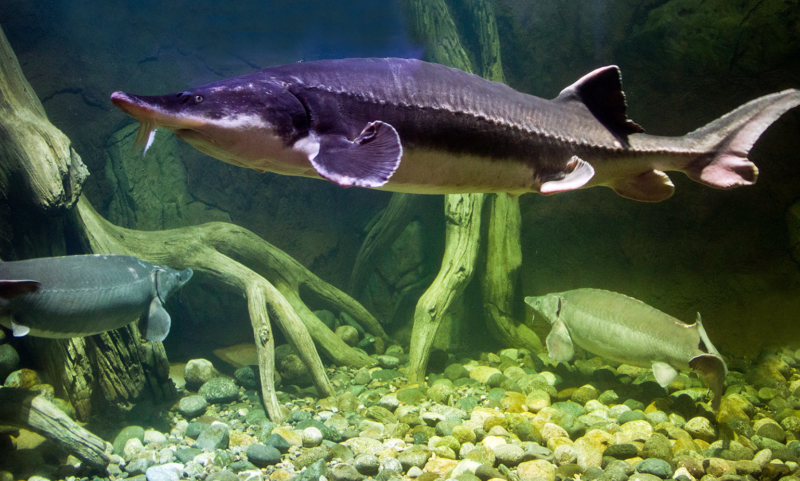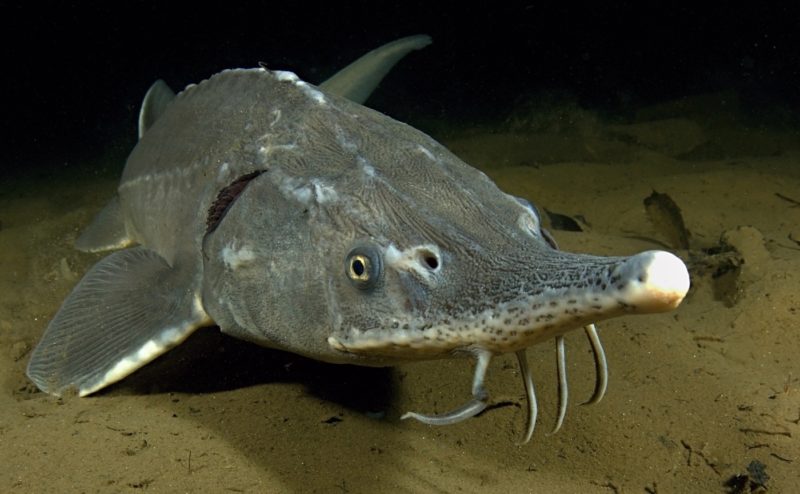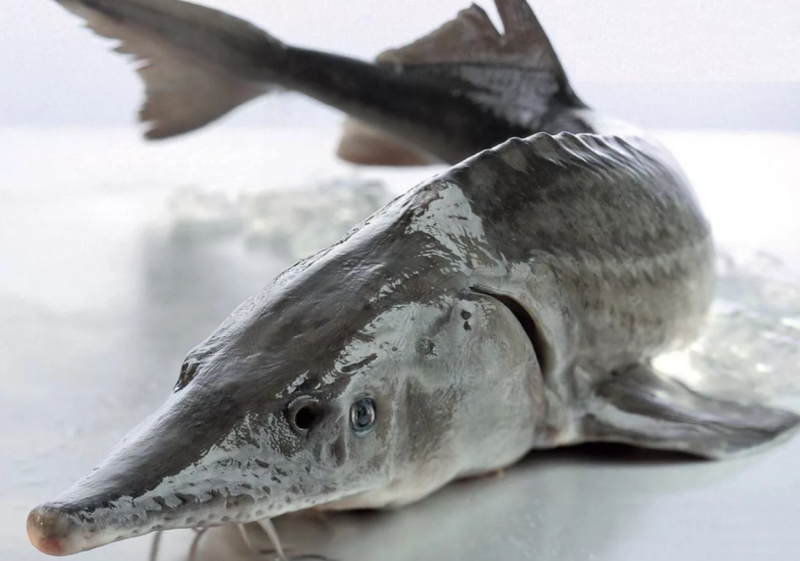What Siberian sturgeon looks like, modern fishermen can see it in the store, in the picture or in the fish farm, where it is bred and raised for sale. There are few sturgeons left in natural reservoirs, therefore it is prohibited to catch it by law.
Material Content:
Short description of Siberian sturgeon
This fish is a living fossil: its historical past is rooted in the Paleozoic era. The taxonomy classifies it as the sturgeon-like and the oldest group of ganoid. The sturgeon family is quite numerous, it has 16 species, most of which live on the territory of Russia. Among them is the Siberian sturgeon.
Siberian sturgeons are not like any of the fish that live in fresh water.
Brief description of appearance:
- The shell shield is made of bone plates on the head, and instead of scales several rows of bone bugs on a spindle-shaped body.
- Instead of the spine, the chord gives elasticity and shape to the body, there are no bones, only cartilage.
- The head has a typical blunt-nosed or pointed-toed shape.
- The color of the back is from dark brown to gray.
- The abdominal part is snow-white or light yellow.
Due to inept fishing and human activities, Siberian sturgeons began to disappear.
The Red Book of the Russian Federation replenished with this species at the end of the last century.
Lifestyle and lifespan
Fish live in the depths of the water and eat bottom organisms, because they have a small oblong mouth, tiny, not very sharp eyes and a flattened belly. The caudal fin has almost no lower part, which serves as an adaptation to the near-bottom existence.
The average life span of Acipenser Baerii is comparable to human and is more than half a century. Old fish can grow up to 2 m and weigh about 210 kg.It can exist in warm and rather cold water in a wide temperature range (+ 1 ... + 25 ° C). On fish farms, practicing breeding in warm reservoirs, as with a lack of O2 and heat, growth is greatly slowed down.
Fish habitat
The Siberian representative of sturgeon lives in the rivers flowing through the expanses of Siberia. Lake Baikal is inhabited by a separate form of lake sturgeon, similar to the individuals of the North American Great Lakes. Baerii spends his whole life in fresh river water, from Baikal he spawns into the rivers Selenga and Barguzin.
In the open water area of the sea, this fish of the sturgeon family does not exit, and during feeding it adheres to desalinated sections of river estuaries.
Depending on the habitat, several territorial subspecies of the Siberian sturgeon are distinguished:
- Yenisei;
- Lensky;
- Ob
- Baikal.
Acipenser Baerii is the only representative of sturgeons in the Lena River, and he lives with the sterlet in the Yenisei and Ob. Sometimes hybrid offspring of these fishes are born.
Reproduction and puberty
The hybrid young Siberian sturgeon and sterlet are prickly, for which the people call it a “fire”. This subspecies, although the smallest, but caviar gives 3 times more than its counterparts.
The puberty of Siberian sturgeons under natural conditions occurs at about 11–19 years. In warm reservoirs of fish farms, this valuable commercial fish matures faster, at 6–7 years.
In the rivers, the female lays eggs at a frequency of 5 years; males spawn every 3 years. These fish are characterized by the formation of schools of different ages with the same sex ratio. Spawning occurs in late spring or early summer at a water temperature of + 12 ... + 18 ° C on sandy or pebble soil. The optimum depth for fish at this time is a mark of 4–8 m, and the current velocity is up to 4 km / h. Unlike other sturgeons, offspring producers feed before spawning during migration.
External characteristics of caviar: from dark brown to black, with a diameter of eggs of about 3 mm.
The female lays from tens of thousands to several million eggs at a time. Fertility ranges from 5 to 30 thousand eggs per 1 kg of live weight. It is interesting that in sexually mature individuals of Lena sturgeons, during the spawning period, the color of the head changes: a snow-white coating appears on it. The clarity of the color and the time of its appearance vary in different fisheries.
What does Siberian sturgeon eat
The delta sections of the rivers, adjacent shallow water rich in organic matter, are the favorite habitats of Siberian sturgeon.
His diet consists of small animal feed, which can be found at the bottom:
- small crustaceans;
- fish fry;
- mollusks;
- mosquito larvae;
- mayfly;
- minnows;
- sea cockroaches.
Starting from the age of 5, representatives of some populations prefer a predatory way of life, while adults from Lake Baikal eat mainly small fish. In most of the range, feeding does not stop in the winter.
Fisheries
Even before the first explorers came to the Yenisei, the fishing of sturgeon by local peoples was an important part of life. The ancient peoples did not know how to use nets and airplanes. Fishing was carried out using a leather belt with a stone instead of a load and a hook made of bone. The best nozzle was a lamprey larva or loach. A good place for fishing was considered where there was a scythe with a pit. A plague of birch bark was established here, and the Ostyaks fished in the summer, hunting for Siberian sturgeon. The place of fishing was considered the property of the family and was inherited. Such fishing persisted on the Yenisei coast until the beginning of the last century, but was supplanted by nets and airplanes.
In Russia, especially a lot of red fish was caught in the first decades of the twentieth century. Industrial catches amounted to several hundred tons. Due to the pollution of water bodies, the construction of dams, hydroelectric power stations and reservoirs, the natural conditions of sturgeon habitat deteriorated.The poachers also contributed to the catastrophic decline in the population. In natural reservoirs, fishing is prohibited by law, the species is listed in the Red Book of the Russian Federation and the Novosibirsk Region.
The breeding of Siberian sturgeon continues in fisheries around the world. Its main producers are the French and Uruguayans. In Russia, there are private and state fish farms for breeding and rearing sturgeon.

















